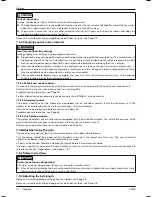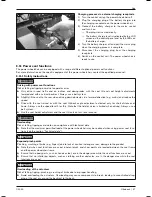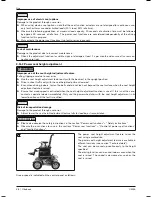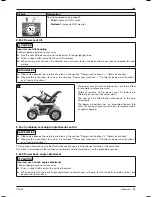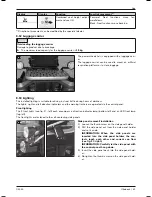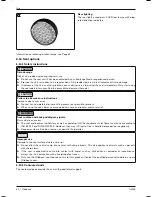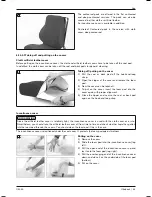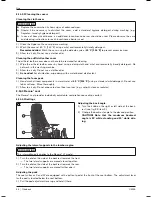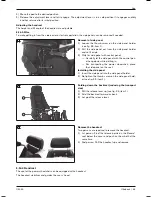
•
In order to navigate downhill gradients safely, the speed must be reduced according to the slope (e.g. select
speed level 1).
•
Never drive downhill backwards.
Terrain:
•
The speed must be reduced in dangerous areas (e.g. select speed level 1).
•
Typical dangerous areas include:
–
Narrow paths along waterways/slopes/cliffs (e.g., quay walls, dikes, etc.)
–
Cramped rooms or areas
–
Steep downgrades (e.g., in the mountains, facing streets)
–
Unsurfaced areas (e.g., on construction sites, intersections, train crossings)
–
Snow-covered or icy areas
Using the control unit:
•
The control system always has to be mounted securely and the joystick position must be correct.
•
The hand or limb used to operate the joystick should be supported, for example on the side panel arm pad.
•
The joystick must not be used as the sole support for the hand or limb, because wheelchair movements and
bumps could cause a loss of control.
•
The intelligent speed control system minimises the effects of slopes and different types of terrain.
•
If the power wheelchair does not drive at full speed even when the battery is fully charged, the selected speed
level should be checked. Contact the qualified personnel if increasing the speed level does not solve the prob
lem.
Further instructions for use
•
Attaching loads such as backpacks and the like can adversely affect stability. Ottobock recommends using a
luggage rack. If this is not available, a backpack should always be secured to the back frame with the shoulder
straps. The maximum load capacity of
5 kg (11 lbs)
should not be exceeded.
•
The recommended total width for category B power wheelchairs in an operational state is
700 mm (27.5")
.
This specification should ensure unhindered use of escape routes, for example. Please note that the wheelchair
dimensions can exceed the recommended value in versions with very large seat widths (for more information
see the "Technical data" section).
•
The wheelchairs in this series fully satisfy the minimum technical requirements for wheelchairs transportable by
train. Note however that, due to the variety of variants and settings, not every specific power wheelchair meets
all minimum requirements (for more information see the section "Appendix" > "Threshold values for wheel
chairs transportable by train").
8.8.3 Switching on and off
WARNING
Lack of brake functionality
Falling, tipping over, collision with persons or nearby objects due to lack of inspection
►
Ensure that the brake release lever is in the driving position every time before you drive (see Page 34).
►
Check the control unit display to ensure that the brakes are operational and functional (see Page 62).
WARNING
Defective safety functions
Falling, tipping over, collision with persons or nearby objects due to lack of inspection
►
Before every use, ensure that the product and its safety functions are in safe and proper condition.
►
Only use the product if all safety functions, e.g. the automatic brakes, are functional.
INFORMATION
In dangerous situations, the product can be turned off at any time using the on/off button. When the button is
pressed, the product brakes immediately and the electrical functions cease. Malfunctions such as an insufficient
supply of power to the controls are recognised by the software, triggering an emergency stop or reducing the
speed of the product. A warning signal will also sound.
30 | Ottobock
Use
C2000
Summary of Contents for C2000
Page 1: ...C2000 Instructions for use 3 ...
Page 69: ...Ottobock 69 C2000 ...
Page 70: ...C2000 70 Ottobock ...

